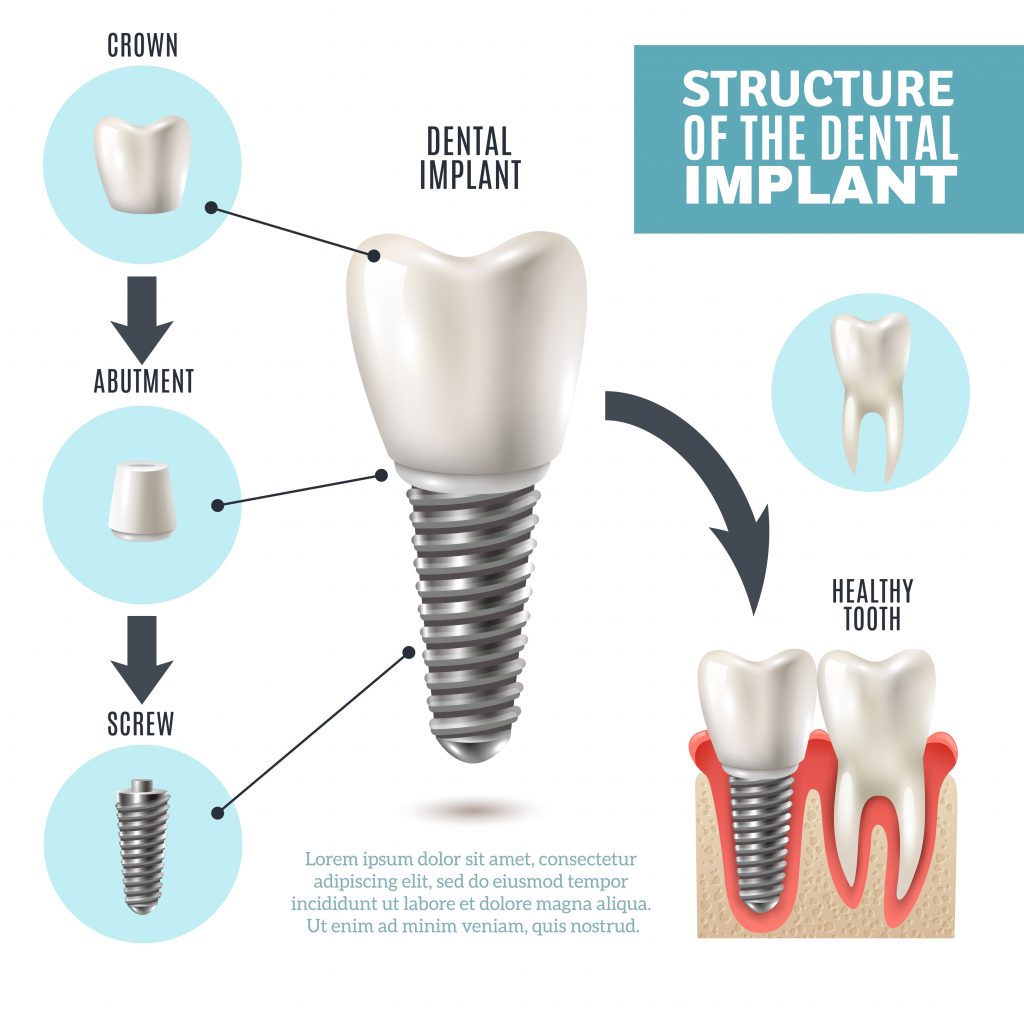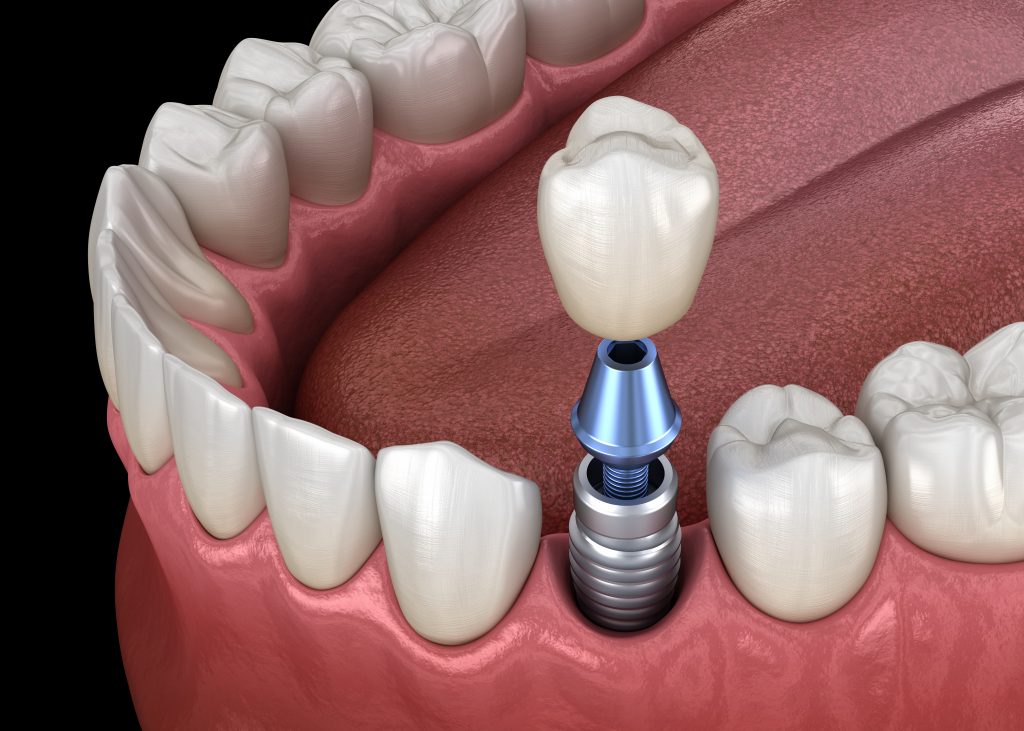Menu
By now you’ve probably heard that dentures and bridges are no longer the only way to correct missing teeth. They’re not even the preferred treatment for many patients.
Dentistry has evolved and dental implants have become a long-lasting, natural-looking option for many people. Dental implants are a fantastic alternative for replacing missing or extracted teeth. They are permanent and, unlike bridges, no teeth usually need to be altered in order to put in the new tooth or teeth.
Let’s start from the beginning:
Like tooth roots, dental implants are secured in the jawbone and cannot be seen once they are surgically placed. They can be used to secure a variety of tooth replacements such as:
Safe and nonreactive titanium is used for root replacement. It is lightweight, strong, and biocompatible, meaning that it’s a material accepted by the body. Dental implants have the highest success rate of any implanted surgical device including other bone implants and orthopedic joint replacements.


Ready to learn more about how dental implants can improve your smile and quality of life? Contact Young Family & Cosmetic Dentistry today to schedule your consultation.